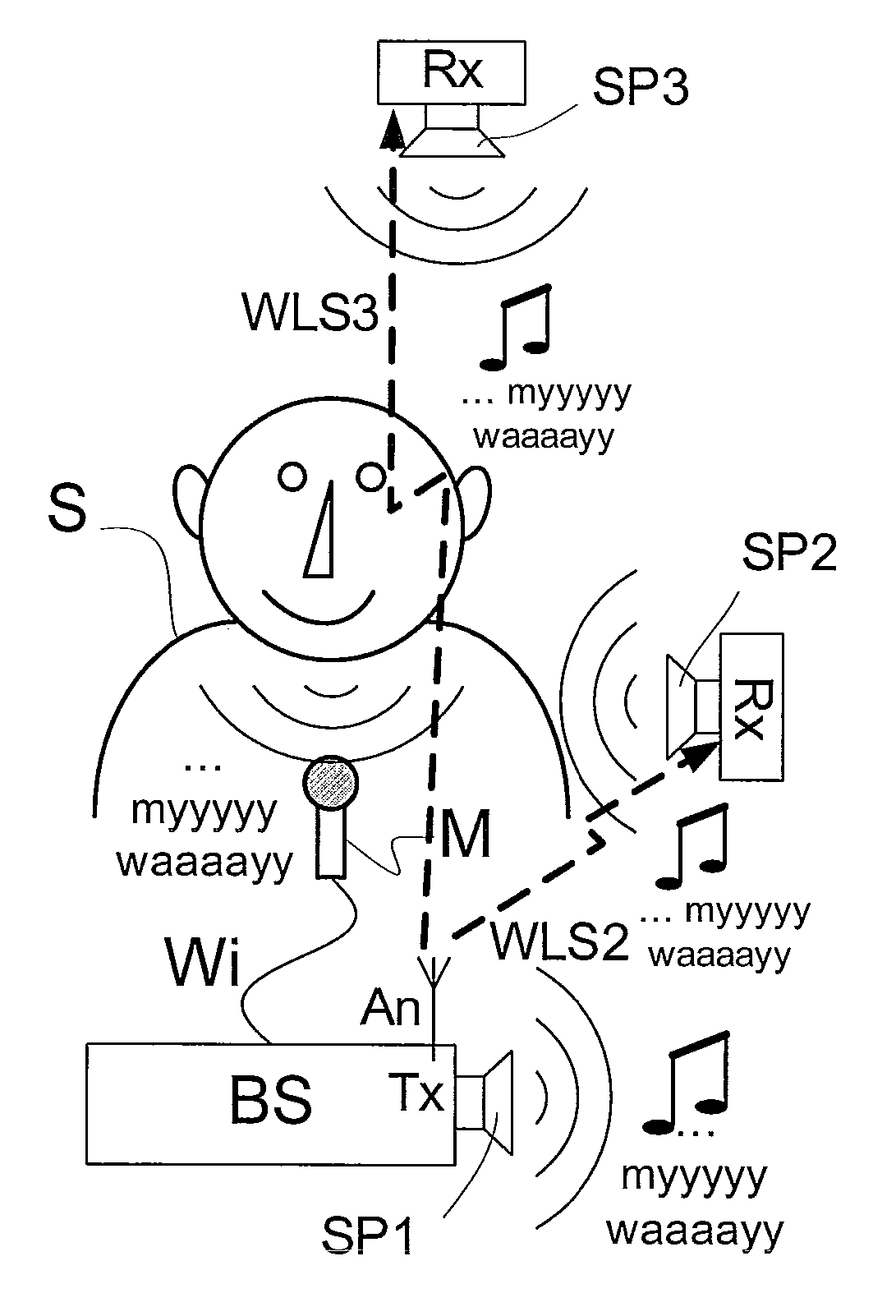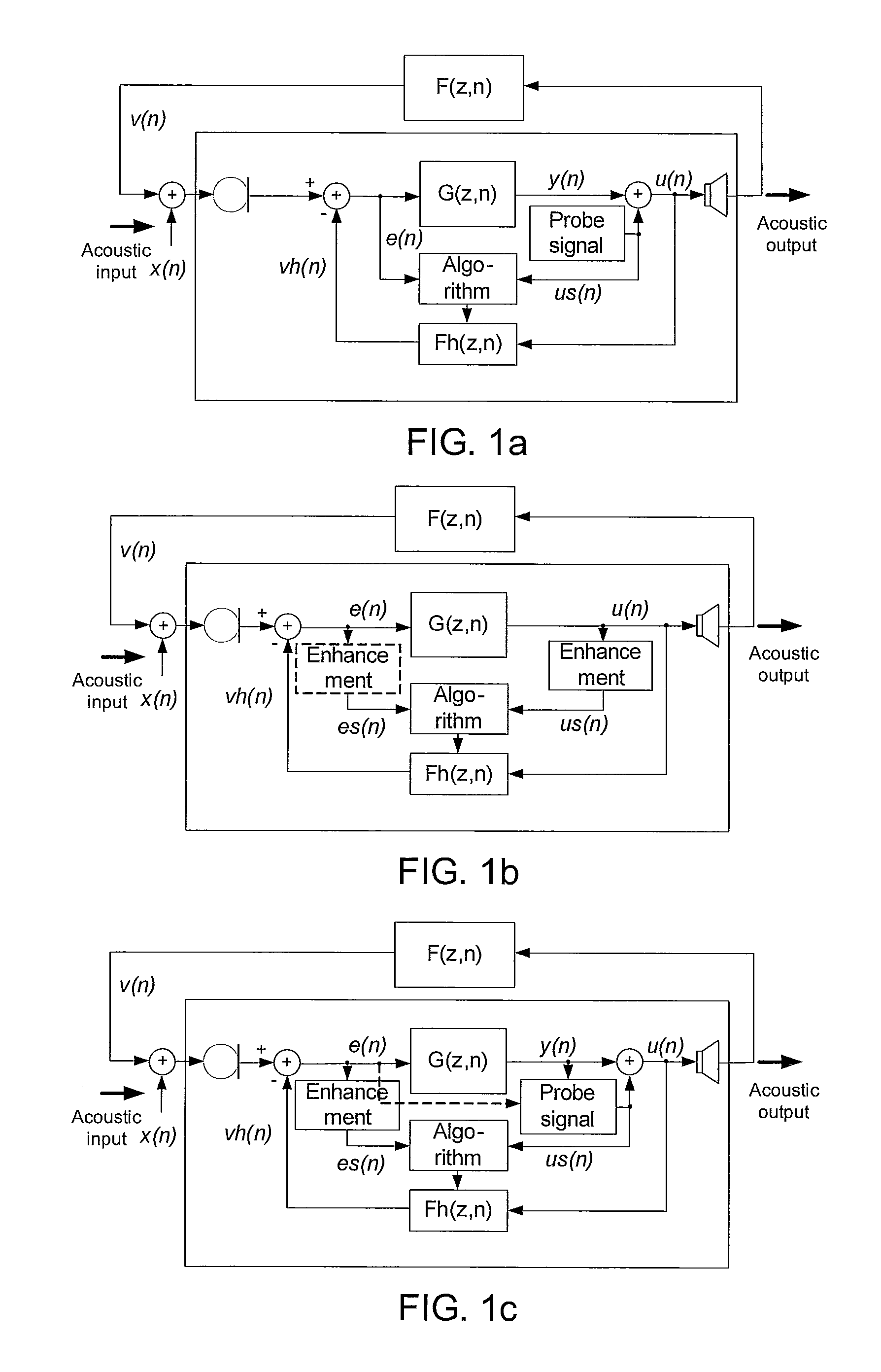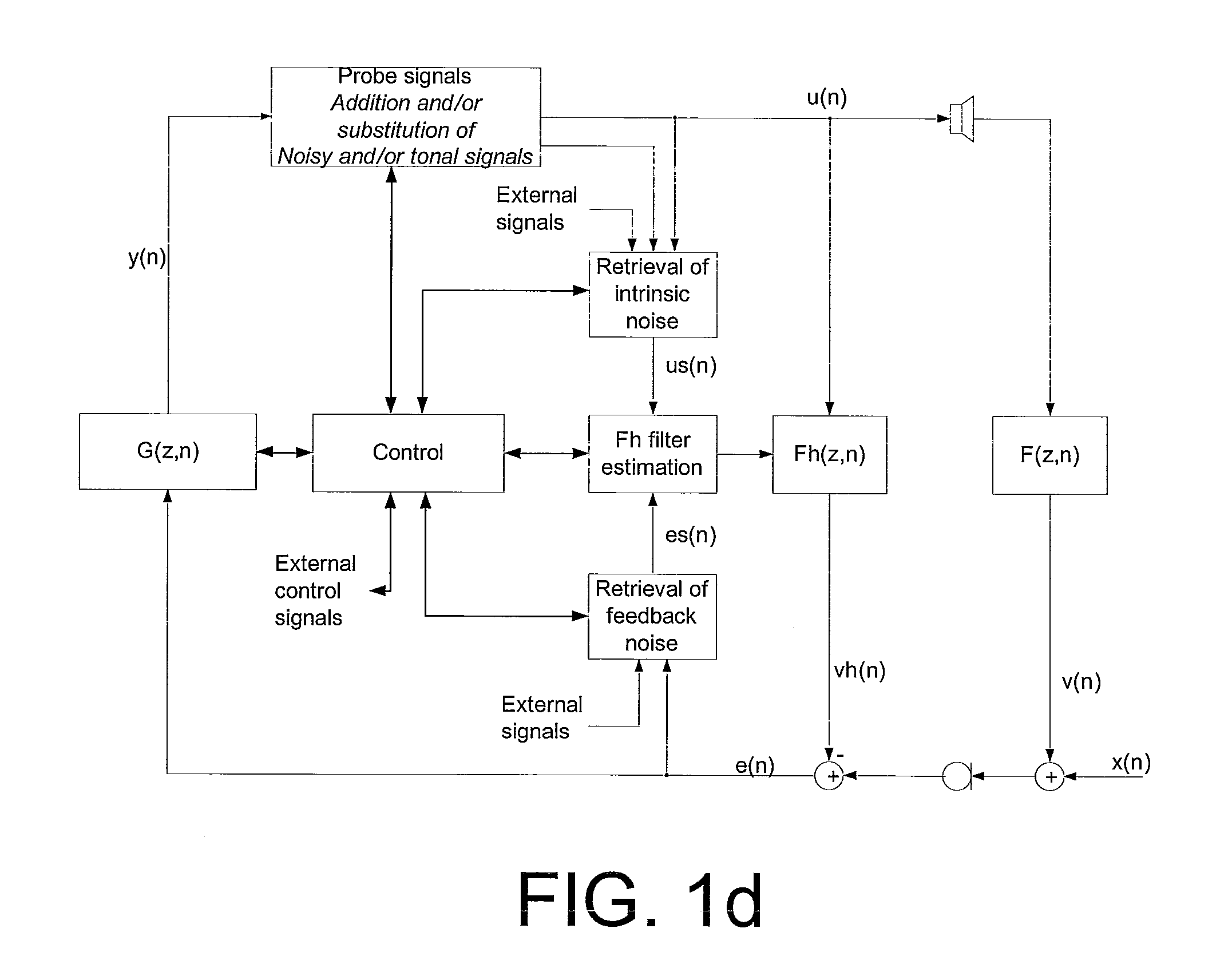Adaptive feedback cancellation based on inserted and/or intrinsic characteristics and matched retrieval
a feedback cancellation and intrinsic characteristic technology, applied in the direction of transducer acoustic reaction prevention, transmission, electrical equipment, etc., can solve the problem of affecting the frequency response of the target signal, the cancellation of (parts of) the target signal and/or sub-oscillation/howl, and the inability to adapt very slowly in the frequency region. to achieve the effect of increasing the convergence ra
- Summary
- Abstract
- Description
- Claims
- Application Information
AI Technical Summary
Benefits of technology
Problems solved by technology
Method used
Image
Examples
embodiment
[0163]Embodiment β of FIG. 2e is largely identical to embodiment a of FIG. 2e. The two embodiments differ in that in embodiment β of FIG. 2e the input to the Retrieval of intrinsic noise unit is the output y(n) from the forward path gain unit G(z,n). This means that the noise retrieval unit extracts noise-like parts is(n) of the output signal (y(n)) before a (masked) probe signal (ms(n)) has been added. Consequently, the masked noise signal ms(n) is added to the output is(n) of the Retrieval of intrinsic noise unit to provide the resulting noise estimate us(n), which is connected to the Fh filter estimation unit ( α). This has the advantage that the Retrieval of intrinsic noise unit does not have to extract the noise-like parts of the signal that originated from the inserted probe noise.
[0164]The masked noise generation method (Method A, FIG. 2a) and signal decomposition method comprising extraction of noise-like parts (Method C, FIG. 2c) and functional units for implementations the...
PUM
 Login to View More
Login to View More Abstract
Description
Claims
Application Information
 Login to View More
Login to View More - R&D
- Intellectual Property
- Life Sciences
- Materials
- Tech Scout
- Unparalleled Data Quality
- Higher Quality Content
- 60% Fewer Hallucinations
Browse by: Latest US Patents, China's latest patents, Technical Efficacy Thesaurus, Application Domain, Technology Topic, Popular Technical Reports.
© 2025 PatSnap. All rights reserved.Legal|Privacy policy|Modern Slavery Act Transparency Statement|Sitemap|About US| Contact US: help@patsnap.com



